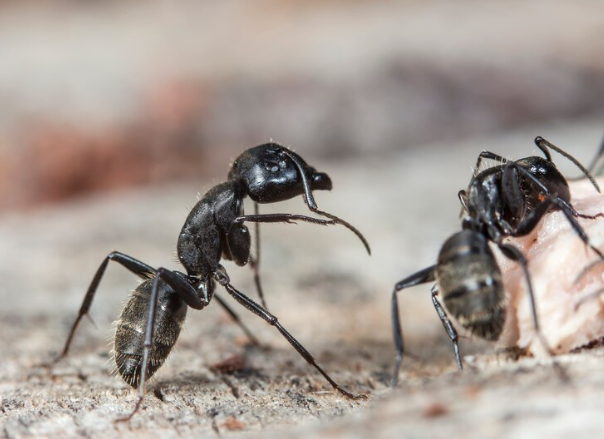Ants are among the most persistent and frustrating household pests in Australia. They travel in organised trails, nest in hard-to-reach places, and seem to reappear no matter how many times you spray. But the secret to removing them effectively lies in understanding how they think and behave. By learning the habits and patterns of ants, homeowners can stop treating the symptoms and start addressing the root of the problem. In this article, we’ll uncover the behavioural secrets of ants that can make a real difference in how you approach infestations. If you’re dealing with regular invasions, expert ants removal in Melbourne services could offer the targeted relief you need.
Ants Are Social and Highly Organised Insects
Ants are not random wanderers. They operate in highly organised colonies, each with its own structure and hierarchy. Worker ants, which are the ones you usually see, are responsible for foraging, maintaining the nest, and protecting the queen.
Understanding this social structure is key. When you see a few ants on your benchtop, it’s never just a few those ants are scouts. They’ve been sent to look for food and report back using scent trails, so the rest of the colony can follow. Spraying these visible ants may give you temporary relief, but it doesn’t impact the colony itself.
This is why baiting systems are more effective. When scout ants carry bait back to the colony, it spreads throughout and reaches the queen, leading to the colony’s eventual collapse.
Ant Trails Are Communication Highways
If you’ve ever noticed a neat trail of ants moving across your floor or wall, you’re witnessing their communication system in action. Ants use pheromones chemical scent signals to lead others to food and back to the nest.
These scent trails are powerful and persistent. Even if you clean the visible ants away, the trail may remain, guiding others right back to the same spot.
Wiping down surfaces with vinegar, lemon juice, or soapy water can help break this communication line, but it’s still a temporary fix unless you locate and remove the nest.
Professional pest technicians understand how ants use scent trails and use this knowledge to trace them back to the source, which is essential for full eradication.
Nesting Behaviour Can Vary by Species
Different ant species prefer different nesting locations. Some nest in the soil near your foundations, others in wall cavities, under floors, or inside electrical boxes. Carpenter ants, for example, burrow into wood, weakening structural elements without leaving obvious signs.
Understanding nesting behaviour helps determine the best removal strategy. Treating soil-dwelling ants requires different techniques than removing ants hidden inside your home’s structure.
This is why identifying the species is such a vital part of professional ants removal services. Without knowing what kind of ant you’re dealing with, it’s easy to waste time and money on the wrong approach.
Food Sources Dictate Ant Activity
Ants are opportunistic and are constantly on the hunt for food. Sweet, greasy, or protein-rich items are their favourites. Leftover pet food, crumbs on the floor, or a sticky benchtop can all become hotspots for ant activity.
By observing where ants are most active, you can often identify the type of food they’re targeting. This helps with choosing the right kind of bait different formulations are effective depending on the ant’s current cravings.
Keeping your home clean and storing food properly are important steps, but they only go so far if the colony is well-established. Once ants have linked your kitchen to their food supply, they won’t stop until the nest is removed or destroyed.
Ant Colonies Can Split and Relocate
One of the most surprising behaviours of ants is “budding.” When a colony is disturbed by sprays or partial removal, it may split into multiple nests. This is common with Argentine ants and other invasive species.
Instead of solving the problem, some DIY treatments may actually make it worse. You end up with more colonies in more locations, each continuing to send out worker ants.
This behaviour highlights the importance of targeted, strategic removal methods that attack the colony in a way that doesn’t trigger budding. That’s something professionals are trained to handle ensuring the solution doesn’t unintentionally spread the problem.
When to Consider Expert Help
While it’s possible to manage small ant issues yourself, understanding their behaviour shows why professional help is often more effective. Pest control experts don’t just kill visible ants they look at colony patterns, nesting behaviour, and feeding habits to develop a custom treatment plan.
If you’ve tried sprays or traps without long-term success, or if ants keep returning to the same areas, it’s time to take a more strategic approach. The cost of repeated DIY products and wasted effort can quickly add up.
Concerned about expenses? Many homeowners are pleasantly surprised to learn that ant removal cost in Melbourne is quite reasonable especially when compared to the cost of structural damage or food contamination caused by untreated infestations.
Conclusion: Understand Ants to Eliminate Them
The key to getting rid of ants isn’t just stronger chemicals it’s smarter strategy. When you understand how ants behave, where they nest, and how they communicate, you can take targeted actions that actually work.
Whether you’re dealing with trails in the kitchen, ants in your walls, or colonies in your backyard, knowing the “why” behind their behaviour helps you plan the “how” of getting rid of them.
If you’re tired of dealing with ants that keep coming back, it’s time to get professional support from people who understand exactly what you’re up against.
Call Ants Pest Control Melbourne on 0385924707 for expert ant removal tailored to your home and ant type. Let us help you break the cycle and reclaim your space one colony at a time.




